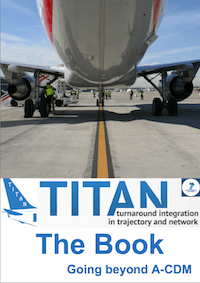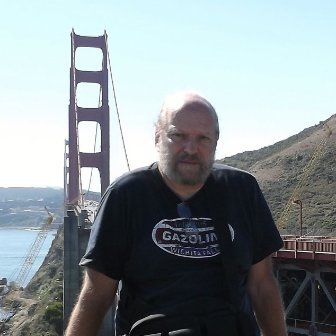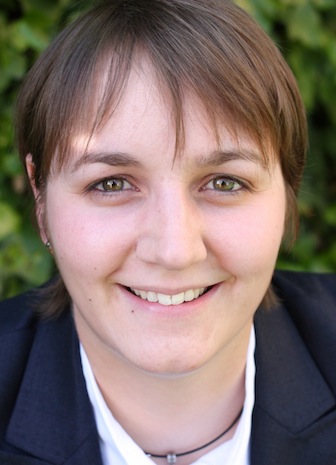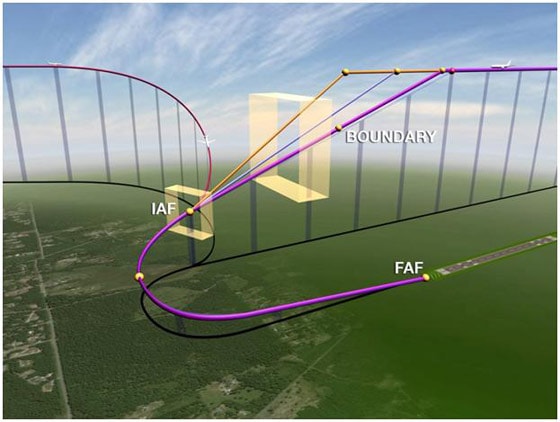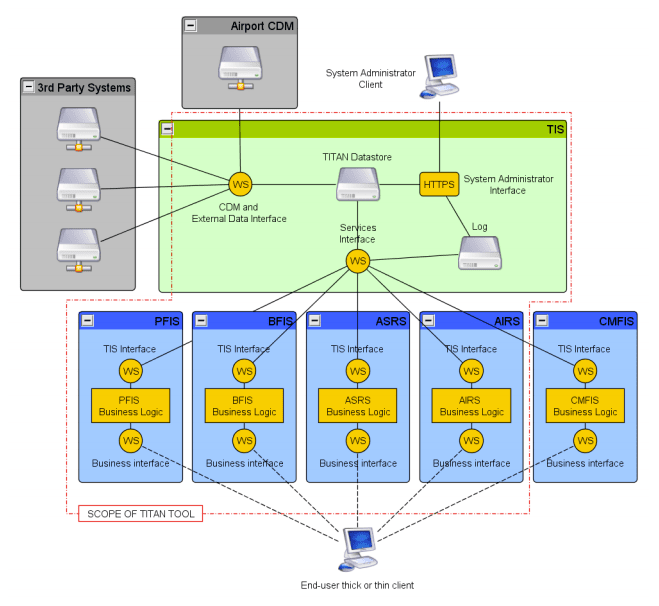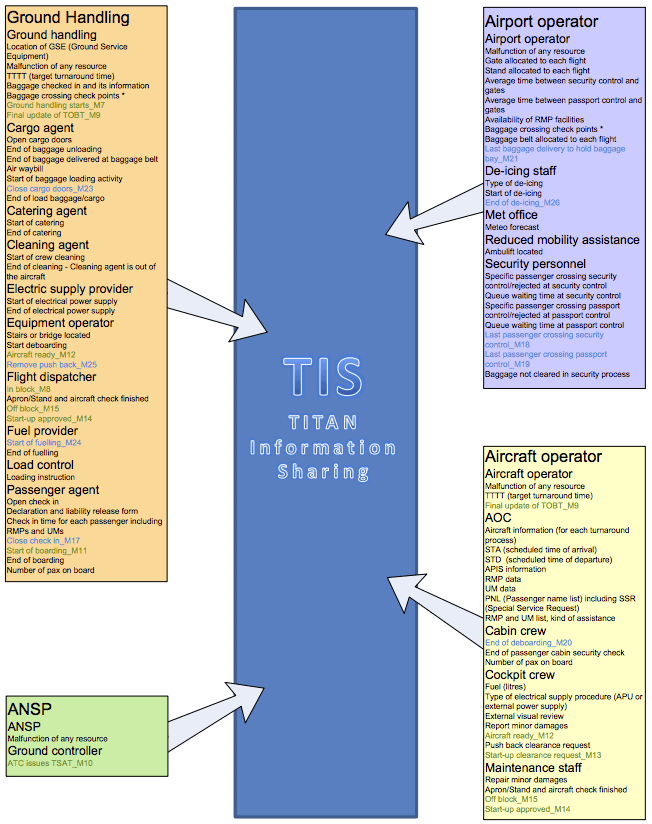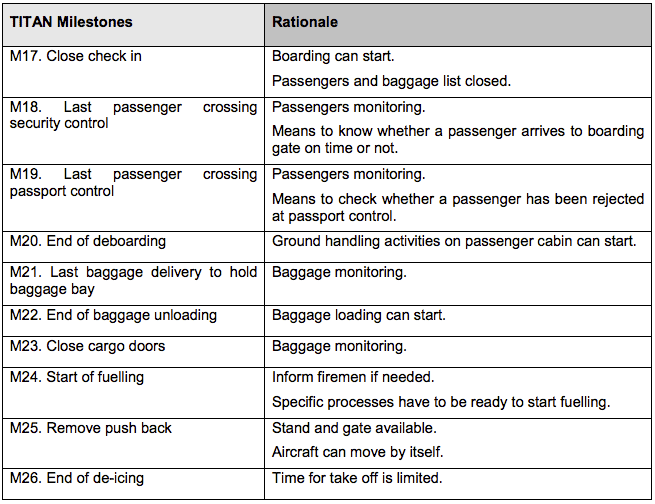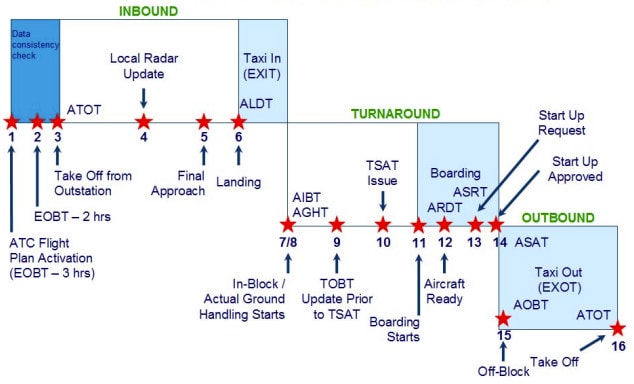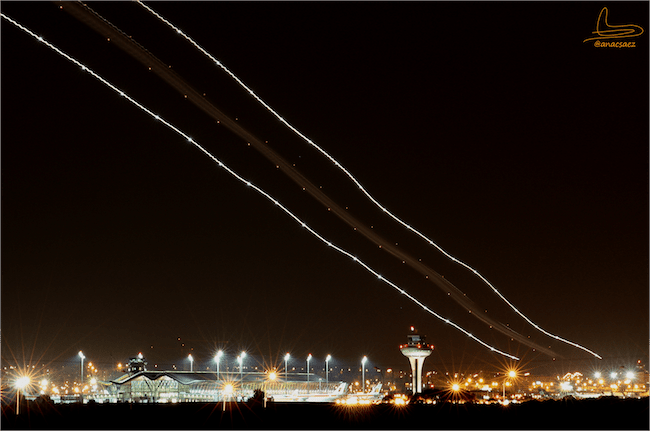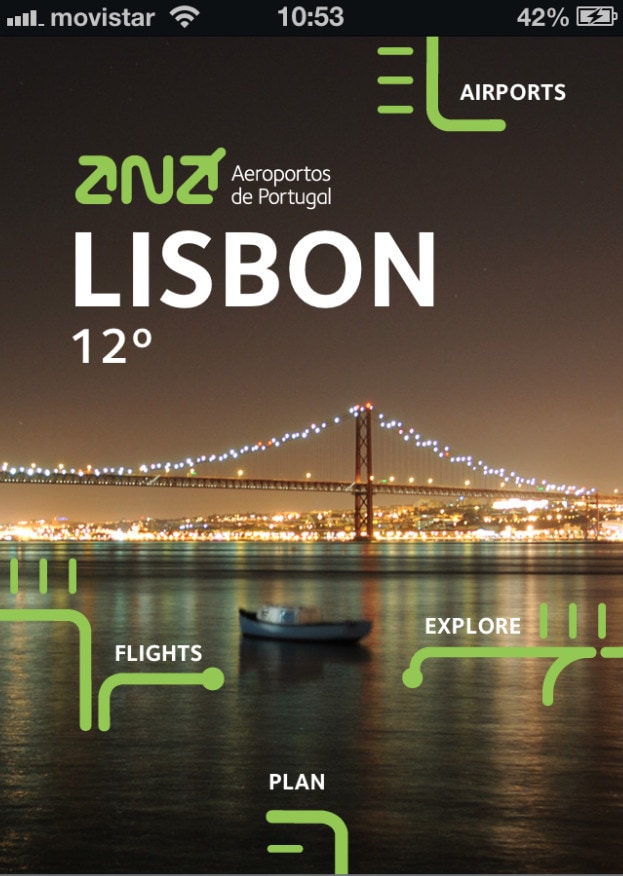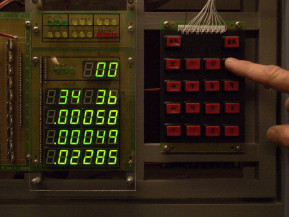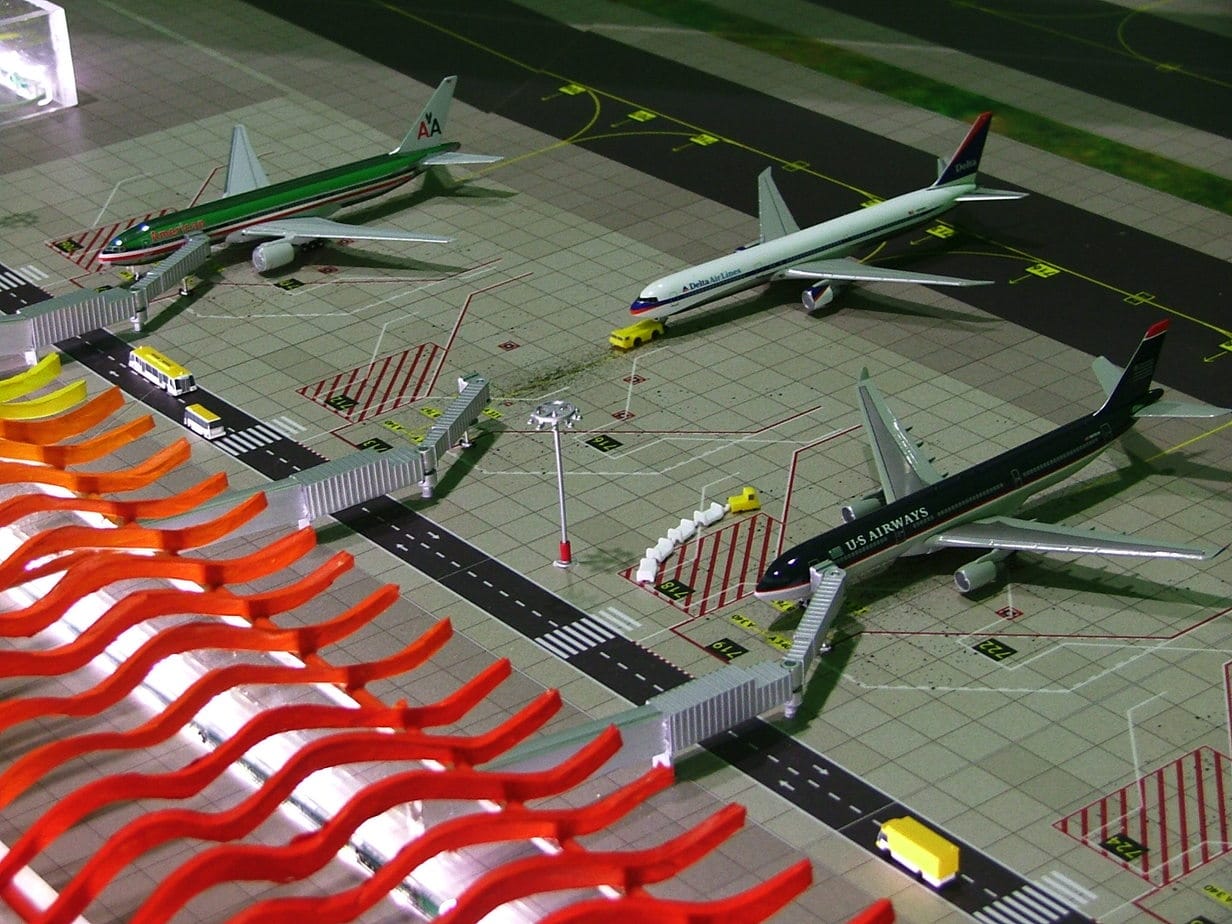Some months ago, I clicked on a incoming link at Twitter and I downloaded the book “TITAN – Going beyond A-CDM” (you can freely download it clicking the link), I only had some notions about A-CDM and I wanted to deepen on it. So, a friday evening I read it in one go, the concepts were perfectly explained from the scratch, introduction to A-CDM, the extending necessity and the TITAN Project under the 7th EU Framework. Its 75 pages are full of information, very concise and very well explained and developed. So Turnaround Integration in Trajectory and Network (TITAN) got all my attention then.
After its reading, I wanted to know more about this project and authors, so I put in contact with Steve Zerkowitz and Ana Saez, the co-authors of the book, and started to talk. I proposed then an interview the book, the EU projects experience and about A-CDM. This is result, one of the best and informative talk we had at aeriaA. I hope you’ll find it interesting.
Let’s present the authors first:
Steve Zerkowitz was born in Budapest, Hungary, the 12/07/1950. He obtained an ATC license in 1972. He is also a qualified computer programmer.
In 1982 he was appointed Superintendent of Air Traffic and Airport Administration’s ATC Evaluation Unit in Budapest. In 1983 he joined the staff of the European Office of ICAO as technical officer rules of the air/search and rescue. In 1986, he worked as special assistant to the Director of the Air Traffic and Airport Administration in Budapest. From 1987 to 1996 he worked on the design team of the Amsterdam Advanced ATC system, as process specialist. In 1996, he joined the IATA’s European Office of Operations and Infrastructure, as Assistant Director. In 2003 he established BLUSKY Services (www.bluskyservices.com) providing support to various aviation partners in the field of ATM. He is also a blogger in a fantastic blog about Air Traffic Management www.roger-wilco.net
Mr. Zerkowitz is one of the original recognized authorities on CDM. He is also CLG Council member.
Ana C. Sáez Sánchez was born in Talavera de la Reina, Spain, the 28/02/1986. She is BAA in Aviation Management (2009), in the Universidad Autónoma de Madrid, Spain.
She currently works as a Project Manager at the Spanish Air Navigation Service Provider PMO (Project Management Office), coordinating the Aena’s contribution to the SESAR Joint Undertaking’s activities developing and validating future CNS/ATM European System and technological support, including affiliate’s companies’ participation. She has worked as a project engineer for the ANS (Air Navigation Service) European Projects Department at INECO, participating at the coordination, technical management and technical contribution, in the EC 7th FP projects in the field of Airport Ground Sector, such as TITAN and AAS for the improvement of the aircraft turnaround at airside and landside. She has also worked in the Directorate of Air Traffic Management in some GNSS projects such as GRAIL and GIANT.
[aeriaA] What is the TITAN project? How it was started? How many people participated on it?
[Ana] TITAN (Turnaround Integration in Trajectory and Network) was an R&D project co-funded by the EC’s Seventh Framework Programme. It started late 2009 and ended by February 2013.
The objective of the project was to develop a new advanced operational concept for the optimization of the turnaround process through an increase of predictability, a reduction of the operational costs and an improvement of the efficiency of the airlines operations. A decision support tool based on this concept has been envisaged within the project allowing the sharing of information between airports, ATC, airlines and ground handling, so that they can enhance their operations with a better awareness of the turnaround process.
TITAN also targeted a particularly ambitious goal regarding the turnaround, which was that 99% of flights should depart within 15 minutes of their scheduled time by 2020.
The TITAN Consortium was composed of 11 companies in which more than 35 people have been working directly in the development of the project. Apart from these, many others have actively altruistically participated bringing to the project their expertise. This has been in my opinion one of the fundamental basis for the development of the project and its success. I would like to take this interview to thank everyone of them for their selfless participation and personally all I could learned from them.
[aeriaA] Why is it so important the SESAR project?
[Ana] Airports are divided into landside and airside. Historically there have been many studies and projects of both sides, but never before had developed anything merging both of them. This is very important for SESAR as this time the Programme can take as an input both the Project Concept and the results that have been obtained.
[aeriaA] In your opinion, what is the SESAR Project status?
[Steve] SESAR is an extremely complex project with a wide range of partners and far too much politics mixed in. Typically, those elements of the concept of operations that would have been realized even without SESAR (but which are now coming late because original work was mostly stopped while everyone waited for SESAR) are slowly coming. The more advanced, really game changing elements are shifting to the right and in spite of the bright communications, things are moving very slowly if at all. Another major shortcoming is that, like other projects in the past, SESAR is addressing the engineering issues and nobody is looking into the institutional aspects… we have said many times before that even modern ATM is not rocket science but without the proper institutional environment, it will not work. Unless SESAR gets their act together, it will be an expensive failure.
[aeriaA] Recently, the US Government Accountability Office (GAO) issued a report (www.gao.gov/assets/660/653626.pdf) about NextGEN, the other world’s star ATM project, and within it the say that one’s of the biggest challenges is the lack of involvement of the “stakeholders”, from airports, ATC to FAA’s specific departments. In Europe, the European Transport’s Commissioner, Siim Kallas, recently said that the SESAR Programme is performing well but the airlines, airports and ANS providers want to see more concrete benefits. Are the stakeholders’ expectations not too clear or beneficial? In projects that has budgets of billions, where are the difficulties in the transition of the experimentation to the concrete deployments tools and procedures?
[Steve] The problem is, we have more or less reached the limits of what is possible in ATM improvements by using conventional methods. SESAR started off by saying that it will have to bring a paradigm change if it is to be different from all the other projects before it. However, this paradigm change is not really visible, ANSPs and even the industry tries to default back to traditional solutions with just a little polishing. The benefits from this are practically invisible. Obviously, ATM is not an area where revolutions are desirable but when you reach the end of the road and face a wall, you should really think about building a bridge rather than adding a few more inches of road because there is still a small gap until the wall. A bridge would have visible benefits and would be supported by the stakeholders… the extra inches of road do not have any of that.
[aeriaA] I really enjoyed a lot with your TITAN’s book, and I can say that the first page has the resume of the book’s style and the TITAN project too, “most problems have simple causes with simple solutions“, “better information sharing eliminates a very large proportion of the problems“, “CDM can only be successful if trust is established between the partners as the first step“. Did we really need to wait for congestion’s skies, lack of punctuality and greener transportation matters for getting it to work?
[Ana] Many thanks for your kind words about regarding the book. I thought that no one was going to tell anything and here you are!
Aviation mind have been always very change reticent. Singular people are reticent too. So, if something is working “properly”, why should we change that? In my opinion everything could be improved, and we can always work harder to do better things, but unfortunately nowadays politicians are the ones establishing guidelines. It is simple: If it works, no more money. They are not pushing forward. This is why Framework Programme Projects are so important.
[Steve] The message from TITAN and indeed the book has been that having a lot of information locally is of little use if that information is not shared with the others. ATM is in fact a machine in which a series of decisions are constantly being made…. The quality of the decisions determines how well the system performs. ATM is a sea of information but it tends to be stuck together in little islands… the people on the islands do see each other and they think this is enough to make good decisions. Well, it is not. And waving to each other is also not good enough. They have to know what is going on, on all the other islands. This is the only way to decide on things on any of the islands.
TITAN – extended version from BluSky Services on Vimeo.
[aeriaA] How was the process of the book’s creation? Did you feel the “fear of the early reader’s comments”? The publication of the TITAN book at LinkedIn in several airport’s related groups give great comments about it, how do you feel about that?
[Ana] I must confess that I was under Steve’s shelter so I wasn’t afraid at all. More than that, it was one of the most special moments in my carrier when he suggested me to be co-author of the book. I was excited and very happy to see my name written next to his. Someone like Steve, with his experience and knowledge! It was amazing for me to collaborate with him, so anything added to this fact, it gave me much joy. Many thanks for sharing it! I have only thankful words for all of you. Especially to Steve.
[Steve] Ana is too kind:)))) I asked her to be co-author of the book because of the excellent way she guided us in the parts of the TITAN project she was looking after. Her insight and fresh thinking helped me put my old thoughts on CDM in a new light and I think this benefited the final product enormously. The book does contain some blunt statements and a few ideas that were not always popular when we first put them up for discussion. However, I was always confident that many people would react favorably to seeing them collected into a single volume… And they did. I am really pleased about that.
[aeriaA] What are the best variables for measuring the cost-benefit to airports, airlines, ground-handlers, ANS providers, etc.? Why ground-handlers and ANS providers have the lowest cost-benefit ratio?
[Steve] This is a complex subject and would take many pages to explain. In summary however we can say that everything that improves predictability is a candidate for measurement. The fact that airlines and airports get most of the benefits while the ground handlers and ANS providers get less reflects the sad fact that airlines and airports have had a very poor deal in the past. Sub-standard decisions, based on insufficiently shared information usually resulted in their operations suffering the most.
[aeriaA] How important is the fusion of the land-side and air-side information sharing in the overall process? Do you have a concrete example that illustrates this?
[Ana] As we have explained before, this was the first time that any project took into account the importance of the analysis of the transition between airside and landside. The entire TITAN project is about that. Sharing information. If landside or airside just uses their “own” information no synergies exists. And not only synergies but the “same” information becomes different. And here the information turns into problems.
One example that illustrates this is the number of checked-in baggages. If no one in landside reports that all passengers of a certain flight have already dropped their luggage into a certain belt, the baggage agent at airside waiting for carrying them out to the airplane, does not optimize his work as he will be “suspecting” that all baggages of that flight in that belt is out, but this information is not real, so too many times they have to go back to bring to the airplane two or three more suitcases that are still in there. This example is the most completed as the information is not only shared between landside and airside. It is also shared among the different destinations airports for them to know which luggage has a connection flight so the passengers don’t have to pick it up during their airport scale. So this is about sharing information among the entire network, not only air and landside in the same airport.
[aeriaA] In my opinion, one of the most challenging topics to solve is the pre-departure sequence? How it is solving and what is your opinion of its present and future implementation of this basic procedure?
[Steve] I think pre-departure sequencing is not rocket science… it is basic common sense. In the past it was not easy to share information that would have made such sequencing practical and telephone calls were not something people did happily to make up for the shortcomings in information sharing. Then when computers were there, it was simply inertia that kept this from happening. To some degree, this is still the case. Another aspect of course is that it is not easy to decide what the best overall sequence is. You have to pull in and consider information way beyond the airport concerned and sometimes this hits a technical or institutional wall… when that happens, people tend to give up. But it will spread, the benefits in predictability (again that word!) cannot be ignored.
[aeriaA] Trajectory Based Operations (TBO) are another of the key aspects of SESAR and NextGEN, for its deployment it will be needed the development of aircraft’s equipment, new ATM system’s evolutions, new standard messages between ANS providers, Eurocontrol…. the help of GPS and the on-going Galileo’s Satellites for effective curve paths routing, etc. It is really impressive all the disciplines and technologies involved in this, are we far for TBO adoption?
[Steve] TBO is such a beautiful concept because of its simplicity. But to understand and apply it properly, a step change in thinking is needed. If you look at the preoccupation in ATM with routes and airspace, airspace management and so on, while very little is being said about the trajectories and to manage those, it is easy to see that the biggest hurdle here again will be to reprogram people’s minds to steer their thinking in the direction of TBO. A lot of work needs to be done on this….
[aeriaA] I’ve been working in integration systems technologies for years, most of them in airport’s business, and I appreciate to much your process and service (business and technical) oriented architecture approach, the use of SWIM as the messaging core for sharing and distributing the knowledge, etc. How these architectures really impact on the overall A-CDM and Level 4 CDM solutions?
[Steve] SOA or Service Oriented Architecture is a very powerful approach if we want to create an agile enterprise and ATM by definition must be such an agile enterprise. Of course, people used to think in terms for boxes and software, it is not always easy to take a step back and imagine their new system in terms of services. However, in one of our projects we did happen on a very pregnant example of what service orientation can really bring. In a certain area, ATM planners were struggling with the definition of a concept of operation that included also an arrival manager with a horizon well beyond to-day’s limited examples. The spent a lot of time debating whether the arrival manager should be located at every airport or just one serving more than one airport… It was an endless discussion of course because they were talking about solutions and not the concept as such. We suggested that they should consider the question as a service…. what they needed was an arrival management service supporting the whole area. Never mind how it is implemented, that will be figured out later. The picture suddenly became very clear, like when fog suddenly lifts.
[aeriaA] The fifth dimension, business value for the aircraft trajectory is a “new guest in the town”, the business development trajectory is a new variable for “trading” routes and with real economics impacts in the operations, but the turnaround process is key for TITAN, tell us about it. It can be optimized more than Ryanair achieved? (I’m joking:))
[Ana] In my opinion the turnaround time is not the problem. Turnaround times are more than optimized. We all know that an airplane not flying is losing money but the airplanes also need a rest as for example their engines need to get cold during the turnaround, so they also require their own time. The problem during the turnaround arises when an unexpected even happens. There are some problems that could be solved by regulation (if a passenger has checked-in some luggage and when boarding, the passenger is not in time at gate, regulation nowadays says that it is forbidden to fly if the owner of that baggage is not inside the aircraft too. So companies have two options: wait for the passenger, or remove the baggage from the aircraft, but this usually takes enough time to delay the flight, just in case that baggage has a bomb or something like that. But, since the 100% of checked-in baggages are security screened by different levels, in my opinion this is not necessary. Maybe the solution could be to improve the screeners and their scanners.
Anyway here is where TITAN is a key, because before improving the process of baggage security, we could know with TITAN where the passenger is or where is located his suitcase inside the aircraft, so this will decrease the times for any decision.
[Steve] The key of the turnaround process is predictability and repeatability. This means that you want to know if there will be a problem and you want to be able to repeat the turnaround within the set time limits irrespective of the circumstances. The actual time is a decision of the airline and this is limited from below by the need for the aircraft breaks to cool down sufficiently. The number of resources a handling agent must have to service x number of aircraft can be reduced if the turnaround is consistently repeatable and if predictability is high. This results in cost savings part of which will be passed on to the airlines. This is just one example of what optimization means in this context.
[aeriaA] Gathering the information service flows you propose in TITAN, Passengers, Baggage, Cargo/Mail, Aircraft Status and Airport Information, what difficulties you found for implementing them in the TITAN tool? How did you deal with the restrictions between them?
[Steve] The TITAN tool did not have outside sources, every bit of information was modeled and simulated. In real life one of the difficult hurdles for the implementers will be to make the different systems talk to each other.
[aeriaA] The new ten Milestones added by TITAN to the A-CDM, has the value that they are easy and economic-relative to measure with common technologies, did you consider/discarded another milestones?
[Ana] Any point of information could be considered as a milestone. And one of the outcomes of the project is that each stakeholder should be able to define the most important for them. The problem with the information is having much more than the ones you can manage. For this purpose, the solution is easy: creating different levels of alerts for the same piece of information, so you can have an alert depending on the level of implication that the milestone have for you. Milestones defined in TITAN should be common for all stakeholders, as they are in the critical path of the turnaround.
[aeriaA] I’m sure that new excellent tools, systems and HMI interfaces will arise for the stakeholders, airlines, airports, ground-handlers, even who knows, local transportation as subways, taxi services, hotels, etc. I really know the complexity in putting decision and monitoring tools into managerial staff, I propose you a new dimension (probably the sixth one) in your future projects, the User Interface and Experience dimension. We can deal with machine to machine interfaces, but in a total visual information era and with the reject for changes at organizations and procedures users, how do you think these huge projects will manage with that? Did you perceive some comments about this?
[Ana] Let me answer with an example:
Companies always have said that they already have the information they need. In my opinion they do have information, but their own, not the common information. Not updated by others. And here it comes the problem, when not all the stakeholders have the same picture of the situation, and they believe they do. Maybe the company doesn’t need information from others (they do), but others need to have the company’s information, and companies are suspicious of sharing it. The answer is easy too. If everyone shares, we all benefit.
[aeriaA] In the TITAN final validation process, the figures are clear and they do not need discussion, you achieved fantastic improvements in turnaround times, what are the best final conclusions for the turnaround time improvement?
[Ana] If no one feels that is the owner of the information and it is shared among all the community, things are much easier. That’s the key.
[aeriaA] In your opinion, as far as you know the different SESAR WPs, what are the most promising technologies that will arise from this project?
[Steve] SESAR will not create new technologies, only use what is available, like ADS-B (Automatic dependent surveillance-broadcast) or MLAT (Multilateration).
I think the most important elements in SESAR are trajectory based operations and information management (SWIM). Everything else is just stuff to support these.
[aeriaA] What are the next R+D key projects necessary for facing the after-SESAR scenario?
[Steve] The increasing presence of aircraft that are able to fly with just one pilot or completely without pilot will be the next big game changer for ATM. If SESAR delivers everything we wrote into the concept, ATM should be able to meet demand for the foreseeable future. But such autonomous flying machines will require some basic changes.
[aeriaA] Ana, Steve, tell us about your experience with the European Framework Programmes. How is the experience in working with a multicultural environment? Any anecdotes?
[Ana] From my side, Framework Programmes Projects allowed me to experience new cultures and people that otherwise would not have been possible. Occupationally, I have learned much more than I could have imagined having met lots of people with incredible experience. I remember one of my first meetings in Berlin, it was the Kick-off Meeting of other Framework Programme Project and in the presentation round table all I could say was that I was the youngest there. The working atmosphere and the support of that people there was incredible for me. At the end of the project I felt fully integrated.
[Steve] I think the money the European Community is spending on these projects is being put to better use to-day than was the case a few years ago. The results of the work also tend to go into real life things easier than in the past. Working with people from several nationalities is fun… When you are involved in several projects at once, you do get confused a bit… hell, just think of the lunch hour differences in different parts of Europe and you will see what your stomach has to contend with.
[aeriaA] Ana, as an “almost-newbie” in the aviation industry, how was the experience to begin in the industry with this kind of projects? What are your future goals in this field?
[Ana] As I have already said, most people I have met were very kind with me at the very beginning. I think these initiatives help to join other cultures and lo learn other way of thinking what is much more important for the career growth. These kinds of projects help to approach to a worldwide scenario and to better understand and support others.
In the close future I would like to have the opportunity to squeeze my desire to work hard, improving continuously and implementing my knowledge and my experience. I hope to have a chance to work in a real-time job (airline, ground handler, airport), in which problems arise and you have to take decisions. I think this is what I miss the most.
[aeriaA] What do/did you attract most of the aviation/airline/airport industry? Do you have any hobbies around them?
[Ana] I could say I’m an “aviation geek” person. I’m in love with aviation. I love to see airplanes land and taking off, hear their sound, see their performance, I love flying… I would like to be private pilot, but it is not cheap, and Spain is not the best country for that either. Well, someday I will for sure J
In my free time related to airplanes I’m a spotter. I hope you enjoy the pictures!
[aeriaA] Steve, why did you start BluSky Services? What are your services? What are the most relevant projects you worked for?
[Steve] BluSy Services was started to support airlines, ANSPs and others in making sense of the many technology choices they have in ATM and to help chart out the longer term future to make sure that what we do to-day is basically compatible with what you will most like be doing in 15 or 20 years. So, most of our projects are intensely future oriented… We are involved for instance in the implementation of Performance Based Navigation, CDM training and the development of interactive educational materials. Cutting edge is synonymous with BluSky.
[aeriaA] Steve, how is your blog (www.roger-wilco.net)? How is your experience as a blogger?
[Steve] There are many excellent aviation themed blogs on the internet and they cover a wide range of subjects. Roger-Wilco is different in as much as I consider its mission being to explain in relatively simple terms what air traffic management is all about. As such, we are trying to appeal to the non-expert reader as well as the experts. I think the mission is appreciated and our readership is increasing steadily. The nice thing about having a blog is that one can say what is on one’s mind and there is no need to follow the party line. It seems that our contributors are most appreciative of this aspect… they regularly send material that might otherwise never get published. Mind you, we are not going to put out anything that would hurt a person or organization. But the truth always has a place on our pages.
Being a blogger is fun!
[aeriaA] Thanks Ana, Thanks Steve!
For more info:
TITAN Project website: www.titan-project.eu
Roger-Wilco Blog, ATM. www.roger-wilco.net

